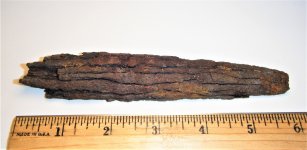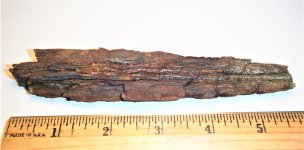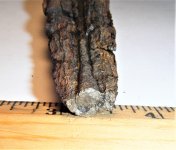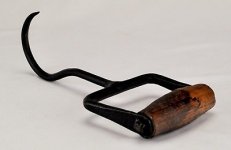TomW244
Hero Member
- Sep 2, 2017
- 976
- 2,186
- Detector(s) used
- Minelab Equinox 600, Garrett AT Pro, Garrett Pinpointer, Bounty Hunter Gold Digger
- Primary Interest:
- All Treasure Hunting
I posted this originally in "Today's Finds", but I got minimal responses and another user suggested I post it here.
I found what I thought at first was a big chunk of rusty metal. It was dowel-shaped, but tapered at the ends. It broke apart as soon as it went in my finds pouch. It turns out that what I thought was rusty metal was actually incredibly brittle wood, which felt like rusty metal to the touch. Running through the center of the piece is an iron square nail, which was well-preserved by the wood that once surrounded it. I found this piece in the same area I previously found a Spanish cob 2 reales coin which, based on the shield (and reverse), dates to 1712 or 1713 and likely is from the 1715 fleet. If this is part of a shipwreck, what would the purpose of this piece be? I'm no expert, but I know there are enough of you on this site who are, so any help would be greatly appreciated!



I found what I thought at first was a big chunk of rusty metal. It was dowel-shaped, but tapered at the ends. It broke apart as soon as it went in my finds pouch. It turns out that what I thought was rusty metal was actually incredibly brittle wood, which felt like rusty metal to the touch. Running through the center of the piece is an iron square nail, which was well-preserved by the wood that once surrounded it. I found this piece in the same area I previously found a Spanish cob 2 reales coin which, based on the shield (and reverse), dates to 1712 or 1713 and likely is from the 1715 fleet. If this is part of a shipwreck, what would the purpose of this piece be? I'm no expert, but I know there are enough of you on this site who are, so any help would be greatly appreciated!









